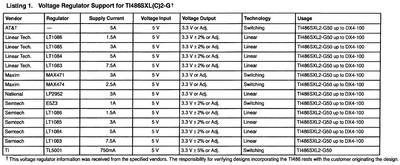The diode, like the parallel resistors, will also heat up. Either the VRM's heatsink dissipates the heat, or some inline component does. I should have some 6 A diodes though.
I ran several tests yesterday and have reached success. I'll report on it in more detail after I run more extensive tests.
By the way, I calculate the current going into the VRM as 1.03 A. I added a heatsink to the VRM and a larger fan to the CPU's heatsink. I've also added a 25 mm fan to the VRM's heatsink. I did add some 2W parallel resistors to drop 2 V . However, over the course of 6 minutes running, that voltage drop increased to 2.5 V, further heating up the resistors. I recorded 63 C on one of the resistors and decided adding a small fan to the VRM's heatsink is better than having inline components.
@Mike, yes, a switching regulator may be better, however I don't think there is any plug-in, pin-compatible, switching regulator that wouldn't require a PCB redesign. With the original spec, from 5.0 Vin to 3.6 Vout, a linear LDO doesn't even get warm. What I am doing now is an after thought, one I never thought would be doing. I don't think anyone else is going to attempt more than 5 V on one of these SXL2 CPUs.
It does beg the question, though - with a peltier and a large copper socket 370 heatsink, can I get 100 MHz out of an SXL2? And at what voltage? Would going too far over, say 5.5 V, start to irritate the northbridge?
Plan your life wisely, you'll be dead before you know it.
